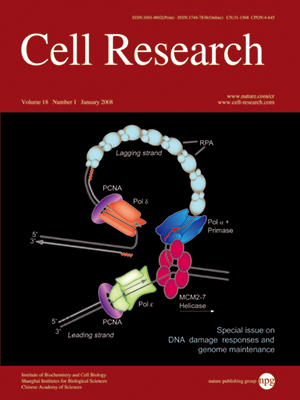
Volume 18, No 1, Jan 2008
ISSN: 1001-0602
EISSN: 1748-7838 2018
impact factor 17.848*
(Clarivate Analytics, 2019)
Volume 18 Issue 1, January 2008: 64-72
REVIEWS
Eukaryotic nucleotide excision repair: from understanding mechanisms to influencing biology
Sarah C Shuck1, Emily A Short2 and John J Turchi1,2
1Department of Biochemistry and Molecular Biology, Indiana University School of Medicine, Indianapolis, IN 46202, USA
2Division of Hematology and Oncology, Indiana University School of Medicine, Indianapolis, IN 46202, USA
Correspondence: John J Turchi(jturchi@iupui.edu )
Repair of bulky DNA adducts by the nucleotide excision repair (NER) pathway is one of the more versatile DNA repair pathways for the removal of DNA lesions. There are two subsets of the NER pathway, global genomic-NER (GG-NER) and transcription-coupled NER (TC-NER), which differ only in the step involving recognition of the DNA lesion. Following recognition of the damage, the sub-pathways then converge for the incision/excision steps and subsequent gap filling and ligation steps. This review will focus on the GGR sub-pathway of NER, while the TCR sub-pathway will be covered in another article in this issue. The ability of the NER pathway to repair a wide array of adducts stems, in part, from the mechanisms involved in the initial recognition step of the damaged DNA and results in NER impacting an equally wide array of human physiological responses and events. In this review, the impact of NER on carcinogenesis, neurological function, sensitivity to environmental factors and sensitivity to cancer therapeutics will be discussed. The knowledge generated in our understanding of the NER pathway over the past 40 years has resulted from advances in the fields of animal model systems, mammalian genetics and in vitro biochemistry, as well as from reconstitution studies and structural analyses of the proteins and enzymes that participate in this pathway. Each of these avenues of research has contributed significantly to our understanding of how the NER pathway works and how alterations in NER activity, both positive and negative, influence human biology.
Cell Research (2008) 18:64-72. doi: 10.1038/cr.2008.2; published online 1 January 2008
FULL TEXT | PDF
Browse 1804


